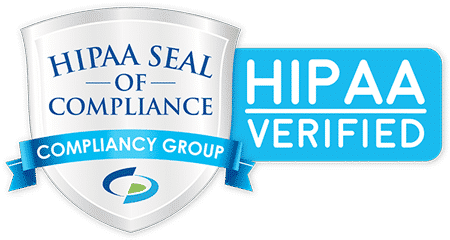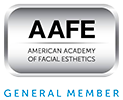Keep your natural sheen
Your smile is one of the first things that people notice about you. A healthy smile isn’t always achieved overnight, but takes a variety of methods to help create and maintain. Here are 10 easy things you can do to help improve the appearance and health of your teeth.
Floss daily
Flossing removes plaque between teeth and out from under the gumlines, where a toothbrush can’t reach. Daily flossing helps prevent tooth decay and gingivitis. When left alone, plaque and tartar build up under the surface of the gumlines. This can cause periodontal disease, which leads to bone destruction and tooth loss.
To floss properly, wrap the floss tightly around your finger and insert in the space between your teeth. Gently slide it up and down under the gumlines two to three times. If bleeding occurs, this is most likely due to gingivitis or gum disease. When flossing daily, the bleeding associated with mild to moderate gingivitis usually stops after about two weeks.
If you just can’t stand flossing, try an oral irrigator. This device sprays water or mouthwash to remove plaque and food between your teeth and below your gumline.
See your hygienist twice a year
Having routine cleanings every six months helps to promote good oral health and a beautiful smile. When your cleanings are irregular, you can develop periodontal disease. This can cause unsightly swollen, receding, and bleeding gums. It’s also linked to health conditions like heart attack, stroke, diabetes, obesity, premature births, and sleep apnea.
In addition to removing stain and tartar from your teeth, your dental hygienist will also screen for health conditions like high blood pressure and oral cancer. Because many health conditions manifest themselves in the mouth, your dentist and hygienist can make you aware of issues that you should follow up on with your doctor.
Give up smoking
Smoking causes staining to your teeth. The stain from smoke is sometimes a superficial stain that can be polished off, but it can also soak deep into the enamel.
Smoking also damages healthy gums, causing them to recede and develop large pockets around the teeth. This makes teeth appear longer and creates dark spaces between them. Smoking also makes it very difficult to reverse gum disease.
Limit your coffee, tea, and red wine
Drinks like coffee, tea, and red wine are known for staining teeth. Similar to smoking, these drinks can build up a superficial stain that your dentist or hygienist can polish off. But they can also cause internal staining of your tooth enamel.
Drinking through a straw can help reduce the stain on your teeth and may help reduce the risk of tooth decay. It can also help to rinse your mouth frequently with water so the dark liquid does not sit on your teeth for a long period between meals.
Choose your whitening products carefully
Depending on your needs, there are a variety of whitening products available: gel pens, rinses, toothpastes, strips, over-the-counter trays, custom trays, and laser whitening. While the choices can be overwhelming, each type can have specific benefits that help you target problem areas. Whitening toothpastes and rinses are good for coffee and tea drinkers. Gel pens are good for touching up small areas, like a tooth that has shifted back and collects more stain. Custom trays and laser whitening provide professional strength whitening and offer the most dramatic results.
Buy a quality toothbrush
Top quality electric toothbrushes are clinically shownTrusted Source to remove more plaque and achieve healthier gums than standard manual toothbrushes. Many now feature modes for whitening and sensitive teeth. The toothbrush bodies are made to last for years, while the heads can be changed out routinely as they age, or for sharing among family members.
If you’re not ready to shell out the dough for an electric toothbrush, be sure to purchase a soft bristled manual brush. While medium and hard bristled brushes are readily available on the market, dental professionals adamantly advise against their use. Stiffer bristles and aggressive brushing causes gums to recede and can wear enamel away from the teeth.
Drink plenty of water
Water is the healthiest drink for your smile and your body. It helps flush teeth clean and discourages tooth decay. Tap water is the best choice as it has the recommended dosage of fluoride. Many times bottled water comes from a source where the fluoride levels are not monitored, or contain no fluoride at all. A healthy level of fluoride promotes tooth health and discourages decay.
Frequent consumption of acidic or sugary drinks can increase decay rates dramatically. Athletes are quickly becoming an at-risk group as the effects of sports drinks take a toll on their teeth.
Improve your other health conditions
Conditions such as high blood pressure, diabetes, obesity, and bruxism (also known as teeth grinding) can all affect the health and appearance of your smile. When the body is strained by one health condition, it’s more difficult to treat another.
Rather than covering up symptoms, you can help improve your health through preventive methods. Eating right and getting enough exercise can dramatically improve the appearance of your body, teeth, and gums.
Get dental treatment in a timely manner
Dental conditions never correct themselves on their own. Tooth decay left untreated can easily transform a small cavity into a large tooth abscess. Where a tiny filling may have been all that was needed, it may now require a root canal and a crown.
Treating your tooth decay early means you’ll need smaller and less invasive dental restorations. This helps maintain the structure and stability of the tooth and keeps treatment costs lower. If left untreated, decay can spread to other teeth and may cause infections throughout the rest of your body.
Brush your teeth twice a day
This is a given, but many people still need to be reminded to brush their teeth at least twice a day. Because plaque can harden into tartar, frequent brushing helps teeth to stay whiter and healthier than in people who brush less often.
How you brush is also important. Angle the bristles toward the gumline at a 45-degree angle, with just enough pressure to make the tissue a lighter color. Gently make small strokes, focusing on only one or two teeth at a time. This will keep your gums healthy and remove the most plaque.
Form good habits for a great smile
It can take some time before you start to notice changes from whitening or improved oral hygiene. While these changes don’t come overnight, they are certainly worth the time and effort, both for the sake of your smile and your overall health.







